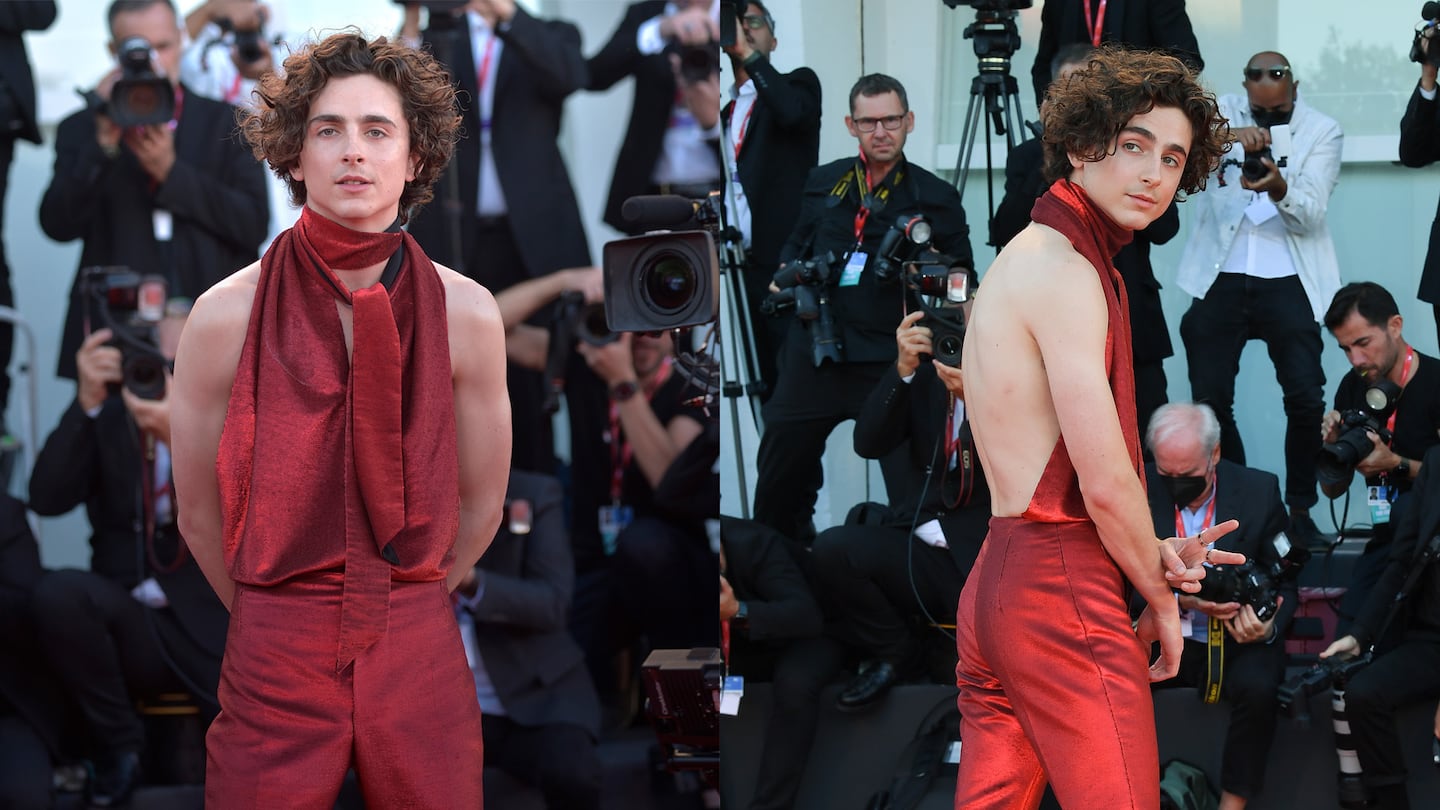
Agenda-setting intelligence, analysis and advice for the global fashion community.

Agenda-setting intelligence, analysis and advice for the global fashion community.

Before Beyoncé’s announcement Tuesday that she has a beauty brand (hair care!) in the works, the internet was abuzz over Chanel’s appointment of Timothée Chalamet as the new face of Bleu de Chanel, a men’s fragrance.
The 27-year-old actor has gained entrée into an elite group; Brad Pitt and Pharrell Williams are among the handful of male celebrities to work with Chanel in this capacity. (French actor Gaspard Ulliel was a Chanel ambassador for Bleu de Chanel, but died in a skiing accident last year.) But what’s most interesting to me about Chanel’s decision to go with Chalamet – even more so than it being his first ever beauty or fashion partnership – is what it says about the evolution of men’s beauty ideals.
Chalamet embodies (and defines) a different kind of masculinity than the generations of leading men who came before him. Chalamet is non-threatening, the opposite of Pitt (or even Ignacio “Nacho” Figueras, the Argentine polo player who was the longtime face of Ralph Lauren and its Polo scents). Chalamet wears pink Glossier hoodies; Pitt in his peak was all glistening six pack and cigarettes in Fight Club.
To older millennials and boomers, it’s a punchline that Chalamet is so thin and delicate and is fashion flamboyant, but that’s what this generation wants to look and be like. Due in large part to Chalamet and Harry Styles, an archetype for a brand of modern masculinity has emerged that’s never been celebrated in mainstream culture. Chalamet, allegedly romantically linked to Kylie Jenner, also loves a red backless jumpsuit. The same for Styles, whose affinity for nail polish led to the creation of his own beauty brand, Pleasing.
ADVERTISEMENT
Despite Chanel’s global dominance, in fashion and as one of the top two fragrance brands in the world (the other is Dior), it lags behind on TikTok – the leading social platform among Gen-Z. According to Spate and Luxurynsight’s fragrance report released this month, Armani Beauty is TikTok’s most viewed perfume brand with 10.4 billion views. Dior and Paco Rabanne are tied for runner up with 4.9 billion views each. Chanel doesn’t even crack into the top five.
Chalamet is a get because he could help the brand gain a foothold among younger customers. He is universally beloved, and his films, Dune 2, is expected to be a blockbuster.
Similarly, Armani Beauty and Dior have recently made sizable investments in Gen-Z talent (with a few millennials thrown in), knowing their business as usual approach to celebrities also needs an update to maintain dominance online.
Stranger Things’ Caleb McLaughlin, who is 21, was just tapped as the new US ambassador for Dior’s La Collection Privée fragrances. In March, Dior named seven new faces for its Gris scent, which is part of La Collection Privée: Maya Hawke (24), Jenna Ortega (20), Oreselan (40), Joseph Quinn (29), Thuso Mbedu (31), Fai Khadra (31) and Liu Yu Xin (26).
In February, Armani Beauty revealed Gen A, “a collective of a new generation of international actresses and actors” that were a pool of Gen-Z and young millennial talent: Maude Apatow (25), Camila Mendes (28), Isabela Merced (21), Lili Reinhart (26), Jonathan Daviss (23), Michael Evans Behling (27) Lukas Gage (27) and Chase Stokes (30).
The hope, I assume, is that one or a few of these individuals might land. Dior needs a scandal-free person under 30 who can be what Johnny Depp was to Sauvage. Unfortunately, none of the above reflect Gen-Z’s changing attitudes toward beauty – or have his star power.
Generative AI is being adopted across the beauty industry to create everything from product images to formulas themselves, based on prompted “vibes.” As more companies utilise these tools for efficiency, they risk losing the creative touch that separates storytelling from slop.
At clinics like 'Wanna Be Taller' in Turkey, male patients are arriving in droves from all over the world to endure an expensive, bone-breaking procedure promising to increase their height as much as nine centimeters.
The latest trend on TikTok has college coeds fearful that their showers are ruining their hair. Naturally, the beauty industry is here to help.
The largest beauty retailer in the US announced it will not renew its shop-in-shop partnership with Target. While initially popular, poor execution, changing shopping habits and overlap between the two stores’ locations and customers brought the collaboration to a halt, experts said.
Generative AI is being adopted across the beauty industry to create everything from product images to formulas themselves, based on prompted “vibes.” As more companies utilise these tools for efficiency, they risk losing the creative touch that separates storytelling from slop.
The institution is fostering a new generation of fashion practitioners with the skills to address one of the industry’s most significant challenges: sustainability. To learn more, BoF sits down with the course leader of Falmouth University’s online MA in Sustainable Fashion, Tom Crisp.
Season seven of Avery Trufelman’s fashion podcast, titled “Gear,” will explore the relationship between the US military and outdoor performance wear.
Emerging labels like Kallmeyer, TWP and Studio Nicholson are capturing high-spending shoppers with premium quality at accessible prices, forcing the industry to rethink what luxury means in 2025.